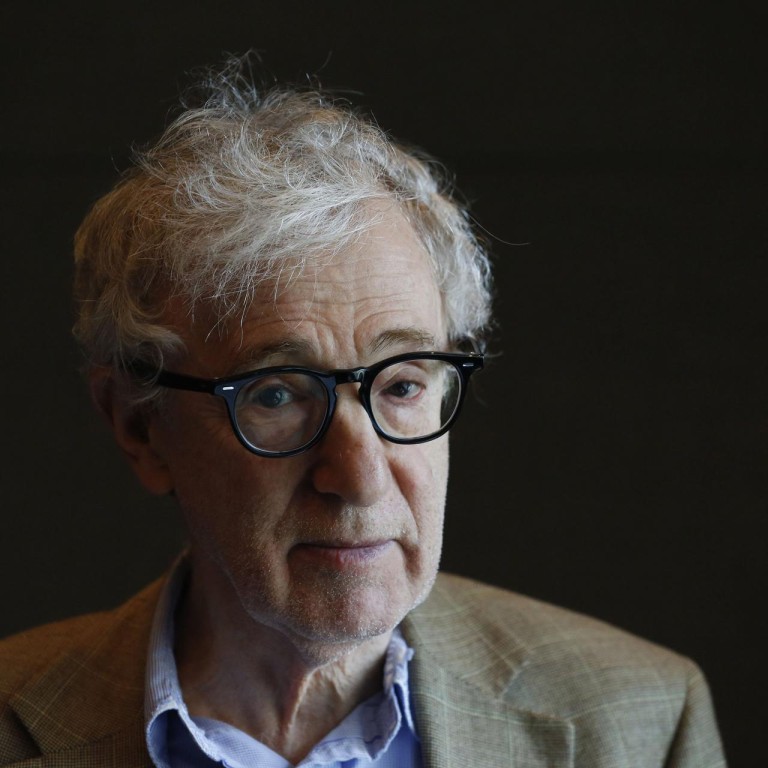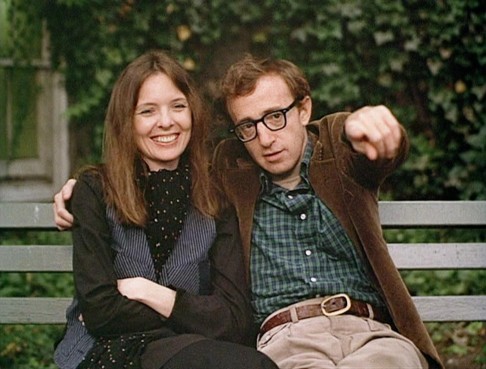
Woody Allen balances the drama and the humour with his latest Europe-based film
With Woody Allen's latest movie out, Richard James Havis looks at the director's life and career in recent years
Woody Allen has been spending a lot of his time behind the camera writing and directing, and has not appeared in any of his recent films. But the characters he brings to the screen still display those instantly recognisable Allen attributes.
That's true of Stanley Crawford (played by Colin Firth), also known as Wei Ling Soon, a popular magician who performs in yellowface in Allen's latest film, . Crawford is a vocal atheist, an intellectual and a snob, and he loves the sound of his own voice. But when faced with charming young medium Sophie (Emma Stone), his scientific approach to life starts to crumble.
Although he admits that his on-screen characters share similar qualities with each other, Allen will often point out that they are not autobiographical, and are not personal reflections of himself.
"I was an amateur magician as a boy, I loved everything about magic, and I did not know that in the history of magic that Houdini [the legendary escape artist] … would debunk mediums who would take advantage of people and prey on them," Allen told Indiewire.
"I thought it would make a good story to take a medium and a more scientific, more sophisticated magician, and have them fall in love."
Most viewers will think they recognise Allen in Firth's portrayal of Crawford. We all know what he's like, right? A nervy, psychologically unstable misanthrope with an acerbic wit, an overactive intelligence, a distaste for religion and a predilection for younger women. After all, we've seen him acting like this time and time again in classic movies such as and , and smaller offerings like and .
While some of the those qualities do seem to be true of the 78-year-old writer-director, it may come as a surprise to discover that the Allen we think we know is an artistic construct. When the entertainer born Allan Stewart Konigsberg was starting out on stage as a stand-up comic, he invented an "Allen" persona, much like Jerry Seinfeld or Britain's Ricky Gervais/David Brent did.
The public liked it and he stuck with it. Although he admits that his on-screen characters share similar qualities with each other, Allen will often point out that they are not autobiographical, and are not personal reflections of himself.

"I've always been in that situation in spades, because I write my movies, and unlike, say Charlie Chaplin, I dress in real life the way I dress, 'cause I play a guy from New York, 'cause I have no acting range. I've always said there are some similarities, but there's great dissimilarity really, and the stories in the movies are fabrications. They are not autobiographical tracts."
Asked if he thinks most viewers believe Allen is basically playing himself in his films, Geoffrey Macnab of says: "Yes. His films often have an autobiographical feel and it is a natural assumption for viewers to think he is drawing on his own experiences. His character doesn't change much from film to film - another reason why it appears as if he is playing himself."
Allen's upbringing did not portend fame, or even a career in the arts. He was born in New York in 1935. His mother worked at a florist and his father drove a cab. He grew up in Brooklyn, separated from what would later become his beloved Manhattan by the East River. He spent a lot of time at the movies when he was young, like any other child of the 1940s. But as he moved into his teens, an interest in playwrights such as Arthur Miller and Tennessee Williams fostered a desire to work in the theatre.
The delicate balancing act between drama and humour that has permeated his career - since , his films have generally mixed humour and drama, and some, like the gloomy, anguished, little-loved , have been straight dramas - started as far back as his childhood.
While still at school, he sent some jokes to a newspaper for fun (papers at that time used to buy jokes); they were published, and the then-Konigsberg was credited. Intrigued, he sent more, and they were published, too. It became a regular gig, but his interest in serious theatre made him ashamed to be involved in comedy. So he changed his byline to "Woody Allen".

Comedy always came naturally to him, Allen told the : "It's a way of dealing with life. People think it's hard to be funny, but it's an interesting thing. If you can do it, it's not hard at all. There are some people who are authentically funny and some people who are not. It's a freak of nature."
Instead of his serious drama, Allen was hired to write a comedy film, (1965), a caper starring Peter O'Toole and Peter Sellers described by as "a zany farce, as way-out as can be reached on the screen". Allen also acted in the film. He had found his way into movies, and made his debut as director with in 1966.
Allen's filmmaking career can be divided into three stages. Before 1977's , his movies are generally loosely structured comedies that draw heavily on visual gags and slapstick - Allen is a fan of silent film comedians Buster Keaton and Charlie Chaplin.
is simply nuts, while is a series of sketches based around Dr David Reuben's pop-sex-science bestseller. (1972), which was written by Allen as a Broadway show and directed for film by Herbert Ross, marks the first appearance of the traditional Allen on-screen character.
Although Allen has said he enjoys making comedies, he has qualified that by adding if that was all he did, he would get bored. marked a significant change in his work, combining humour and drama into a poignant, wistful and ultimately sad New York story. The story features Allen as a nervy TV writer who's romantically involved with the ditzy, charming Keaton.
They are an intelligent pair, but emotionally awkward, and have difficulty expressing their feelings and connecting with each other, an idea that would permeate his work for about two decades. The theme would continue in the black-and-white , which also acts as a love letter to the island he adores.

Allen made his first film with long-time leading lady Mia Farrow in 1982, with . (Allen was in a relationship with Farrow from 1980 to 1992; Farrow ended the relationship when she found that Allen had taken nude pictures of her adopted daughter, Soon-Yi, whom Allen later married. Farrow's daughter Dylan accused Allen of sexual abuse in 1992, and recently wrote an open letter to repeating the allegations; Allen denied them in a letter to the same newspaper).
Their relationship may have gone terribly wrong, but Farrow did seem to influence his films for the better: "From on, Allen's films became progressively more humanistic and mature, much less neurotically defensive, far more confidently crafted, and far more trusting of women," says British publication .
Allen's US audience, which was never high outside of the major cities, tailed off in the 1990s, in part because of public outrage over his relationship with Soon-Yi, and Dylan Farrow's allegations of sexual abuse. The third phase of his career has been spent making films in Europe, where he has always been popular, and where is made.
Macnab says that until fairly recently, he thought Allen was in terminal decline. " and his other British-based films marked a particular nadir. However, I've admired his recent films [ , ] and hope that he is enjoying an Indian summer."
takes place on the French Riviera, and is a chamber piece about an egocentric magician (Firth) in the 1920s who's challenged to unmask a fraudulent, but attractive medium (Stone).
Allen's direction is solid, and the film is given gravity by some excellent performances and a well-crafted script. Although it's a little frivolous compared to his classic works, there are some hyperactive literary observations about the need for fantasy, and even self-deception in daily life, leavened with the usual doses of incredulity, intellectual snobbishness, and pessimism.
Although he now shoots in Europe, Allen still lives in Manhattan, making his movies abroad during the summer. The island, which frames many of his films, has been important to him since he visited from Brooklyn with his parents, when he was four, he told Schickel.
"The first time I visited Manhattan that I can remember was an astonishing experience … I couldn't get enough of it. I realised that all I ever wanted to do was live in Manhattan, work in Manhattan. I couldn't get enough of it."
Perhaps the future will see Allen making films there again.
Magic in the Moonlight
